
The lake, meres and waters challenge
Taking on the lakes, Meres & Waters Ultra Run was a challenge like no other. This gruelling 100-mile route winds its way through the heart of the Lake District, boasting over 6,500 meters of elevation gain, while showcasing the sheer beauty of 26 iconic lakes, meres, and waters. It’s not just a round; it’s a journey that tests both your stamina and mental grit, but more than that, it’s a chance to lose yourself in one of the most breathtaking landscapes in the world. Every twist in the trail reveals something new—from the calm stillness of lakeshores to rugged mountain passes with endless views. In September, as and online running coach and ultra runner I embraced this incredible opportunity. The adventure took me 25 hours through some interesting—and at times brutal—conditions. To say it was a test would be an understatement. But that’s part of what makes this route so special.
In the Footsteps of Fell Running Giants
The lakes meres and waters route holds a special place in fell running history. It’s a route that honors legends like Joss Naylor, a man who needs no introduction to those who love the fells. Following his footsteps across the Lakeland fells felt humbling. His remarkable achievements and love for these hills have inspired countless runners, myself included.
But this post isn’t just about the legacy it’s about my experience, the ups and downs (literally!), and how I approached the day. I’ve broken it down leg by leg, to give you insight into what it looked like from my perspective. Hopefully, it’ll inspire those thinking of taking on this mammoth challenge!
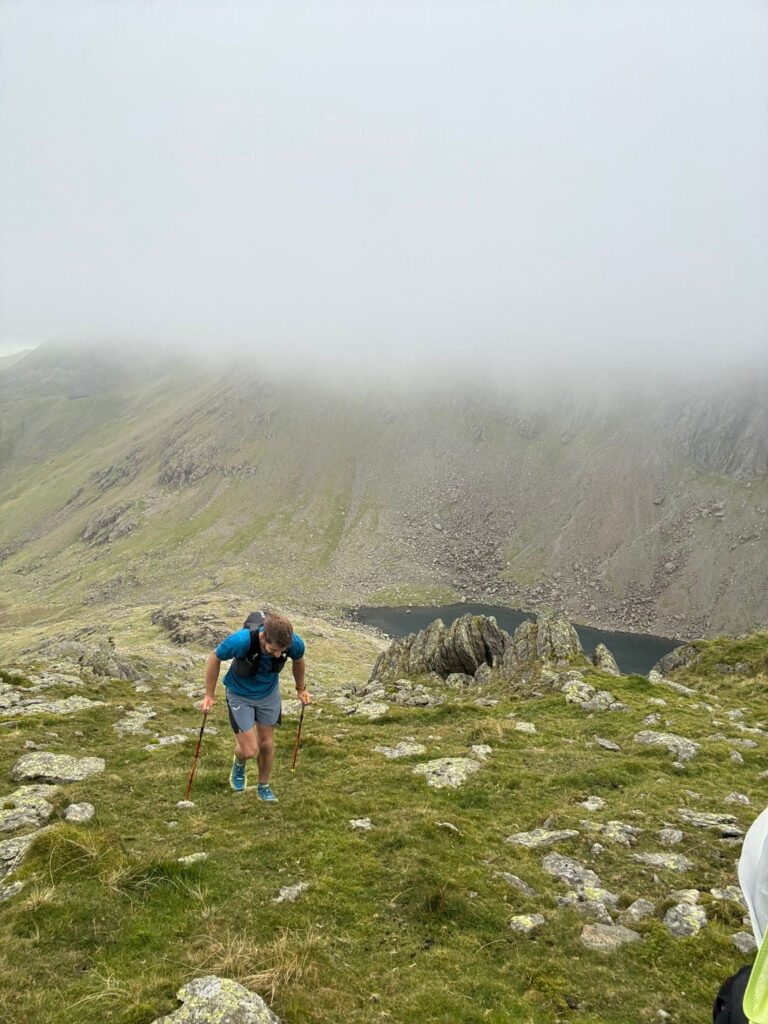
LEG 1 LOWESWATER TO ENNERDALE
- Distance: 25 km
- Ascent: 1295 meters
- Lakes Visited: Ennerdale, Loweswater, Crummock Water, Buttermere
- Crew: Kat D
- Start time: 8 a.m.
We kicked off in true Lake District fashion—under a deluge of rain. The forecast had promised strong winds and heavy rain throughout the morning, clearing up around midday. So, by the time Kat, Kirsten, and I walked the 1 km from the car park to the start, we were already soaked through. I guess that’s what you sign up for running in these parts—wild, unpredictable weather. But that didn’t dampen the excitement. Running alongside Crummock Water and Buttermere was a treat.
These are trails I’ve pounded many times before, but the thrill never fades. Despite the rain, the early morning light casting a soft glow on the lakes was magical. I’ve always been more of a fell runner, so while the trails along the water’s edge were beautiful, I was eager to get up into the fells. And that rst big climb didn’t disappoint—wet, cold, and windy, but exhilarating.
Reaching High Stile was a battle against the elements. The wind was relentless, but as we dropped down into Ennerdale, there was some brief respite from the weather. This was where Kat parted ways, leaving me to run solo until Coniston—a good 50 km away.
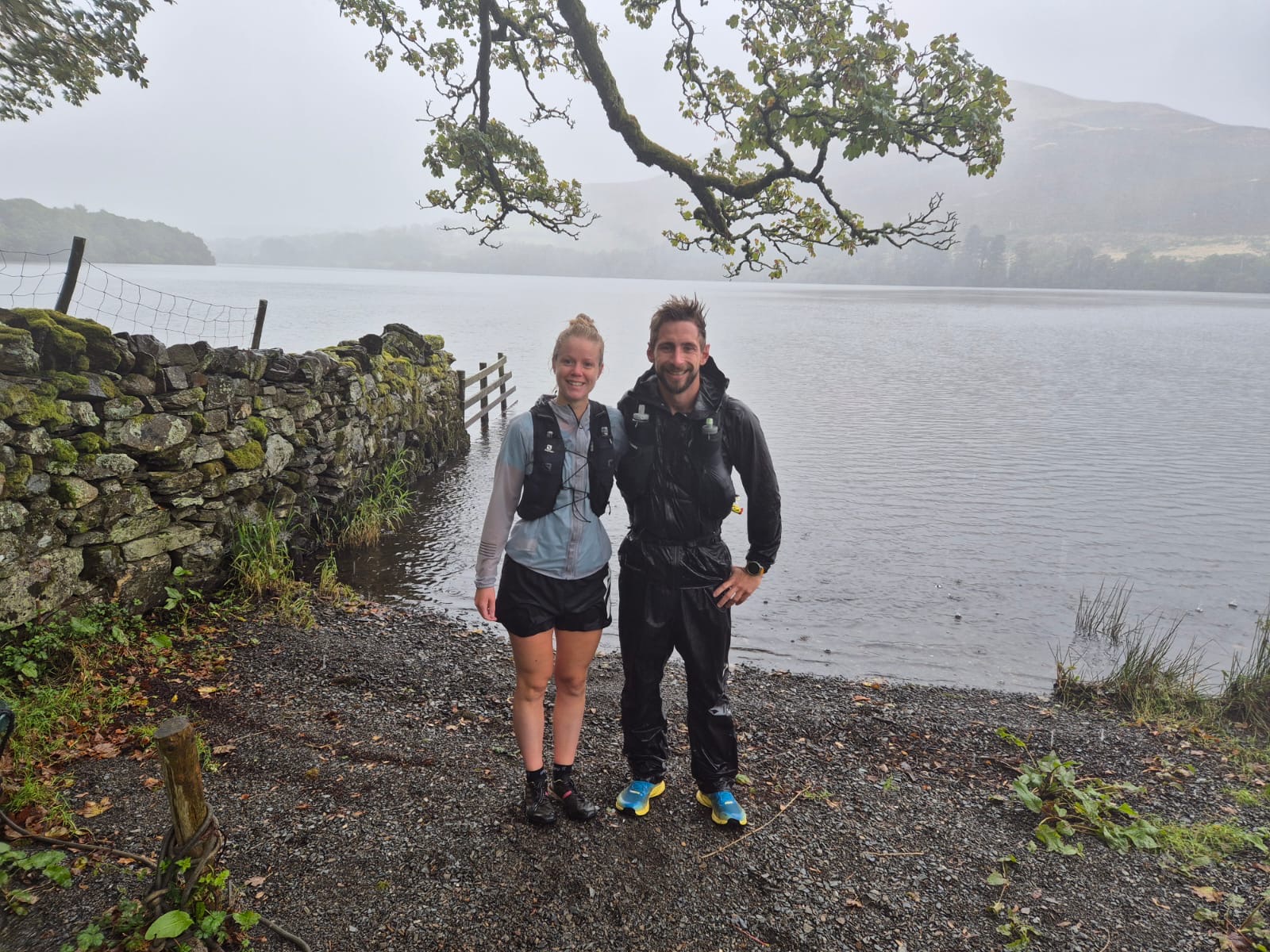
At the start of the Lakes, Meres and Waters with Kat
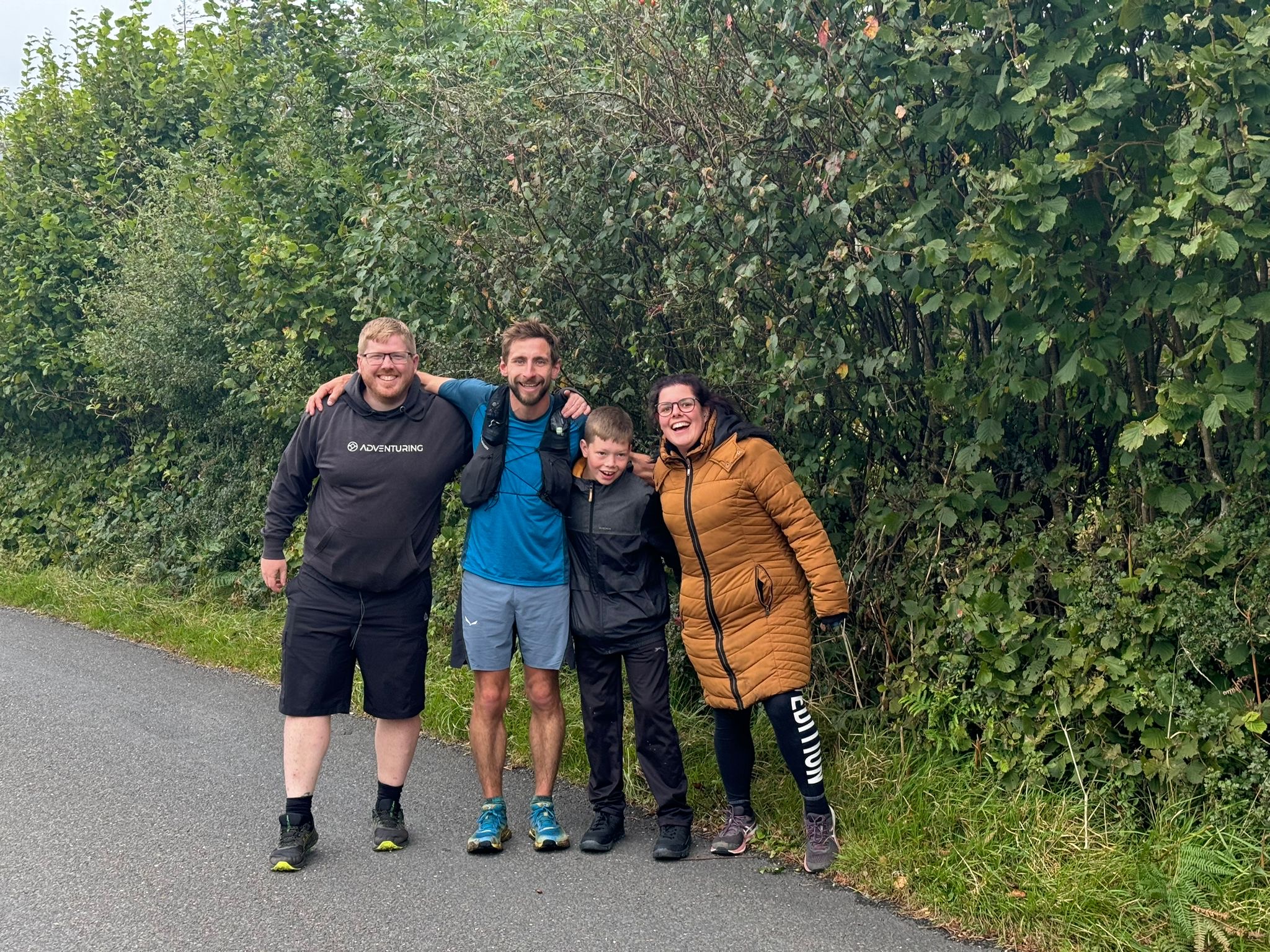
Jack, Jess and Nathan
LEG 2 Wasdale to Seathwaite
- Distance: 22 km
- Ascent: 790 meters
- Lakes Visited: Wastwater, Devoke Water
- Crew: Solo
This leg… well, let’s call it “the drag.” Leaving Wasdale behind, I was struck by how much I missed the company. Running along the long road section towards Devoke Water, with cars zipping past and a heavy pack weighing me down, made this section a grind. I had no emotional connection to this stretch, unlike Joss Naylor, who’d be right at home in these hills. But for me, it was a case of pushing through, keeping one foot in front of the other, and counting down the kilometers. To be brutally honest, this leg felt like it dragged on forever.
With nothing to distract me from the discomfort, I realized how much I could’ve used a crew member here—just for the conversation, the distraction from the miles. Still, I kept pushing, knowing that Dan was waiting at Walna Scar Road. It’s strange how the mind works—knowing I’d see him soon gave me the boost I needed to keep moving. That nal approach to Devoke Water felt like a never-ending trudge. There’s something about being out there alone that makes you dig deep.
You question yourself, battle the doubts, but also nd a quiet strength. I found myself thinking less about the nish and more about just getting to the next lake. One at a time, ticking them off like little milestones.
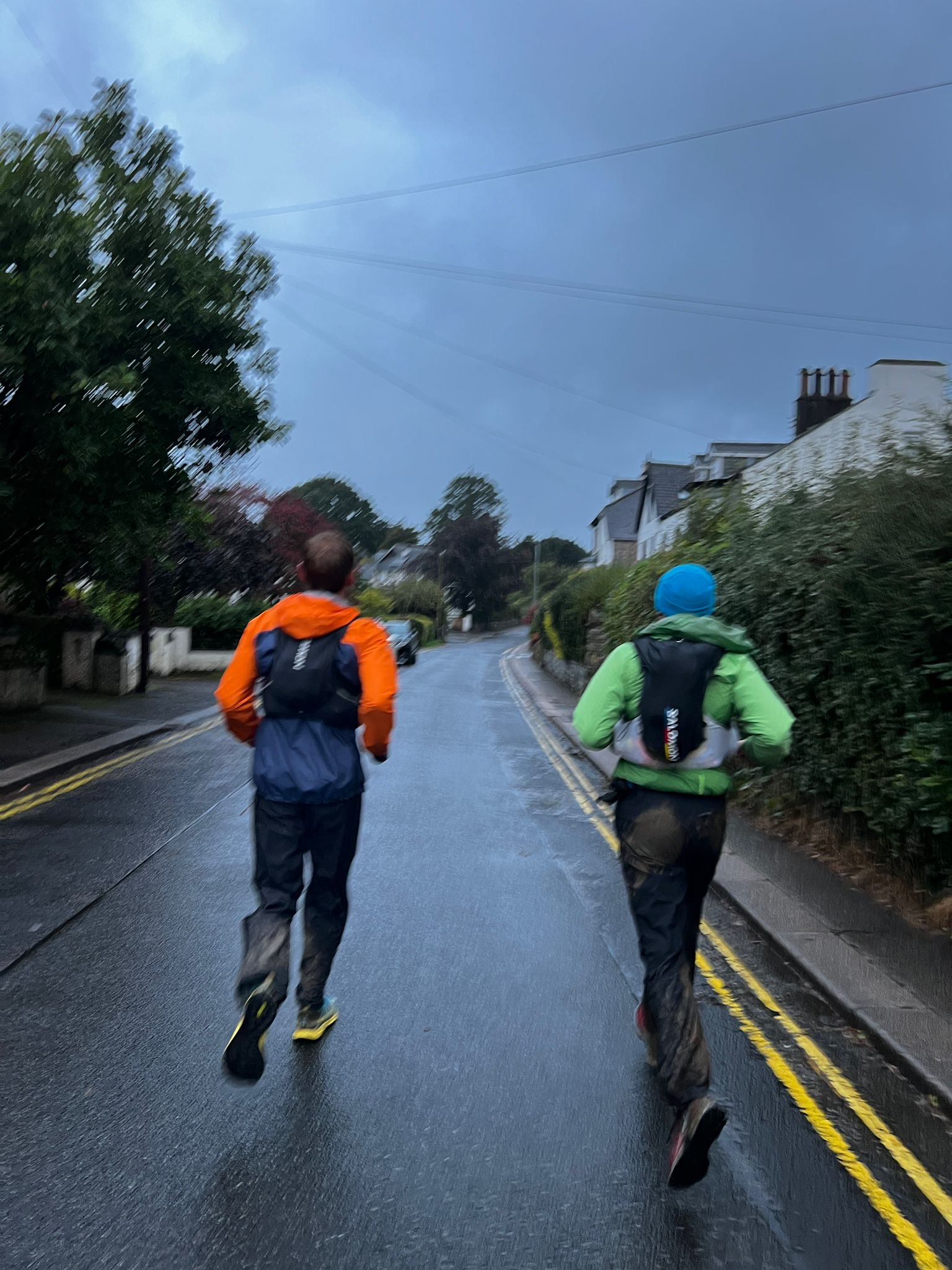
On the Home Straight
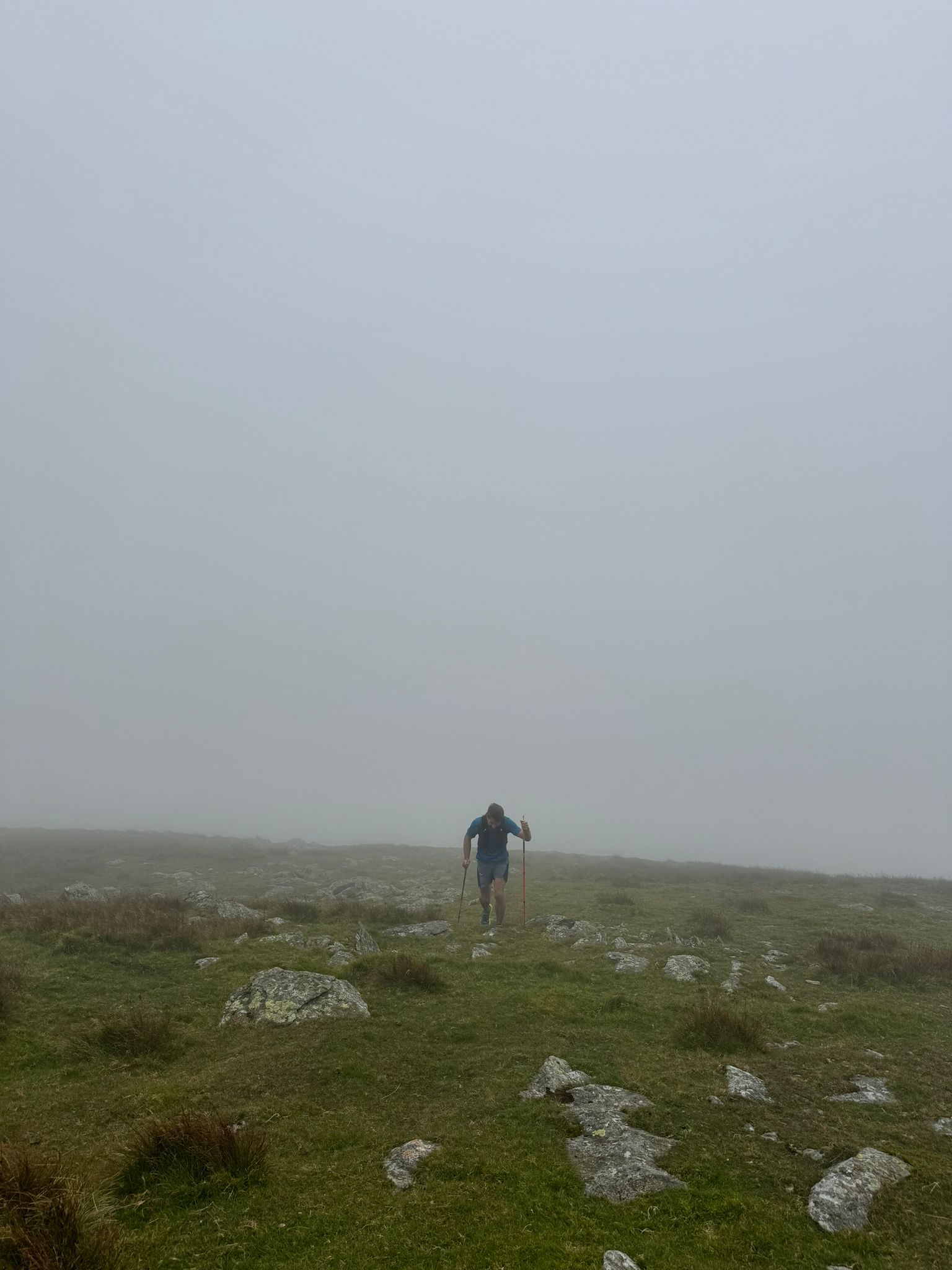
Ticking over the fells .. the calm before the storm
Aliquam lacinia interdum diam quis malesuada. Sed id purus cursus, lobortis magna sed
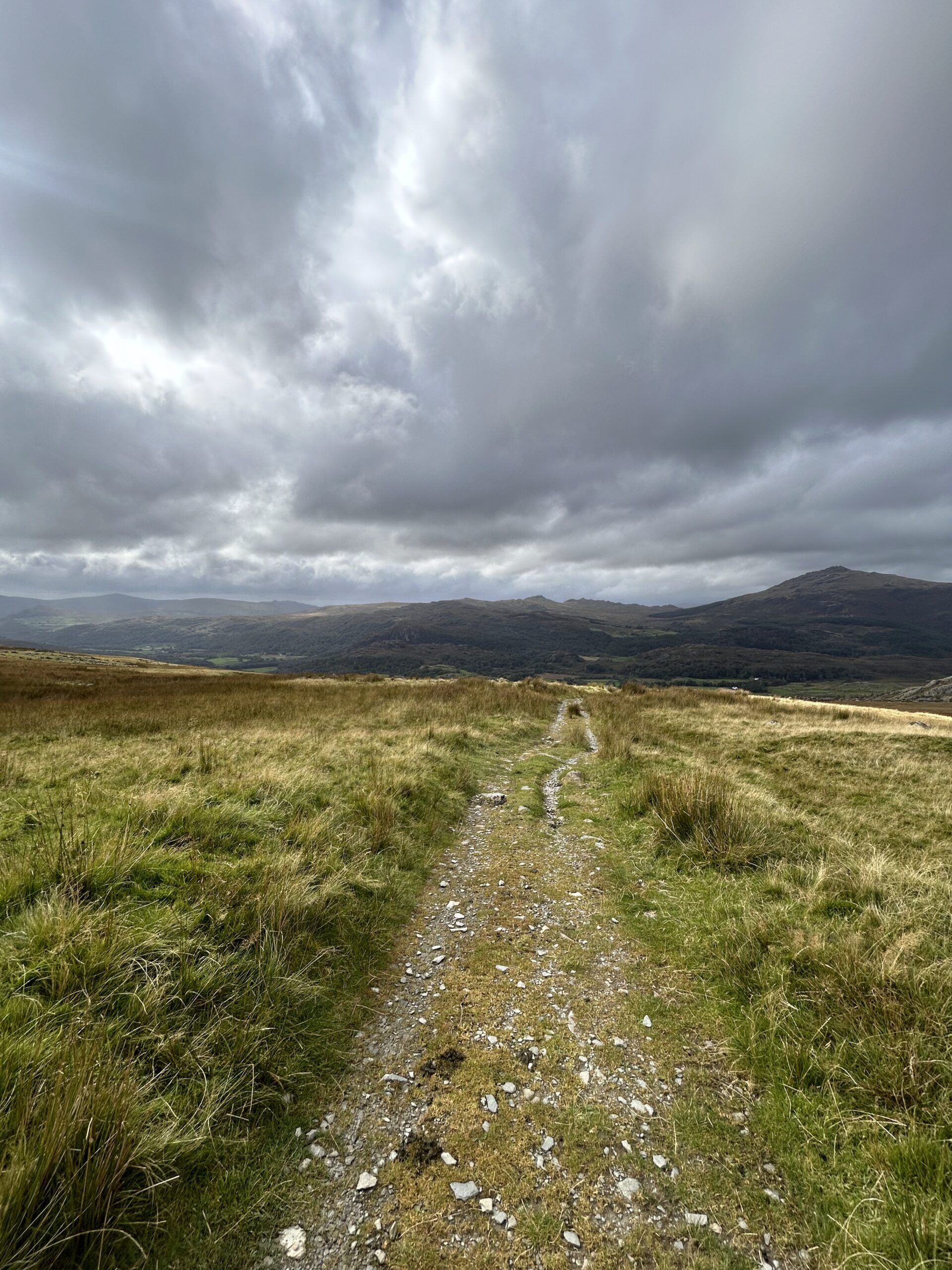
The long road
LEG 3 Seathwaite to Monk Coniston
- Distance: 15.77 km
- Ascent: 685 meters
- Lakes Visited: : Goats Water, Low Water, Levers Water, Coniston
- Crew: Dan
I’ll admit it—this leg is my favorite of the entire round. After grinding my way up to the Walna Scar Road, I was back in proper fell running territory, and I could feel the energy returning to my legs. Having Dan with me for this section was a real lift. What’s funny is that I’d only met Dan the day before, yet here he was, buzzing with excitement, ready to take on the next stretch with me. That’s the beauty of fell running in the Lakes. Strangers become instant friends, offering support without hesitation. It’s humbling, really—time and again, people I’d never met have shown up to help on these rounds, asking for nothing in return.
There’s nothing quite like the fell running community. Once we left the path, it was a quick traverse past Blind Tarn, with some fast, fun terrain perfect for fell running. We nailed the line down to Goats Water and then hit the steep, direct pull up to the summit of the Old Man of Coniston. It felt great to be moving well through the fells, especially with good company and a bit of banter to lighten the mood. Just as we reached the top, I got a call from my mate James Gibson. He’s a mountaineering instructor, and he was up on Helvellyn doing safety for another event. He’d seen the weather forecast and, knowing I was out here, felt compelled to check in. Now, James knows me well—he wasn’t calling to scare me but to give me the heads-up.
Apparently, we were in for some serious weather later in the evening, with heavy rain and strong winds expected to roll in around 9 p.m. It was going to be a rough night if I didn’t prepare properly. James and I talked it through, and we agreed that I needed to swap out my lightweight running gear for some heavy-duty kit before the bad weather hit.
The original plan was a quick 5-minute stop at Monk Coniston, but now it was clear that I needed to take a little more time there to make sure I had everything I’d need for the next stretch. I wasn’t going to have another crew stop until Derwent Water, which was at least 14 hours away.
I messaged Kirsten, who was meeting me at Monk Coniston in a couple of hours, and the conversation went something like this: Me: “If it looks like it belongs on a mountain and I use it for work, can you bring it?” Kirsten: “That’s basically everything you own.” Me: “Great, easy decision then!” Kirsten: “Got it—keep moving, I’ll sort it.” The way my crew rallied at this point was amazing. Everyone scrambled to get the gear sorted, giving me the best shot at continuing through what would likely be a stormy night. Once we were up and over the Old Man, we made a quick drop to tick off Low Water before the technical traverse over to Levers Water.
That section was pure joy—we nailed the line, and the terrain was just what I love: rocky, challenging, but rewarding when you get it right. From there, it was a steady cruise back onto the hard-packed trails and through the village of Coniston. Reaching Monk Coniston felt like a massive relief. I’d been running for over 10 hours, covering more than 70 km, and this was my real rest. Sitting down after that many hours on the go was a welcome break, even though I knew it wouldn’t last long. Still, I was more than ready for what lay ahead—gear sorted, legs still holding up
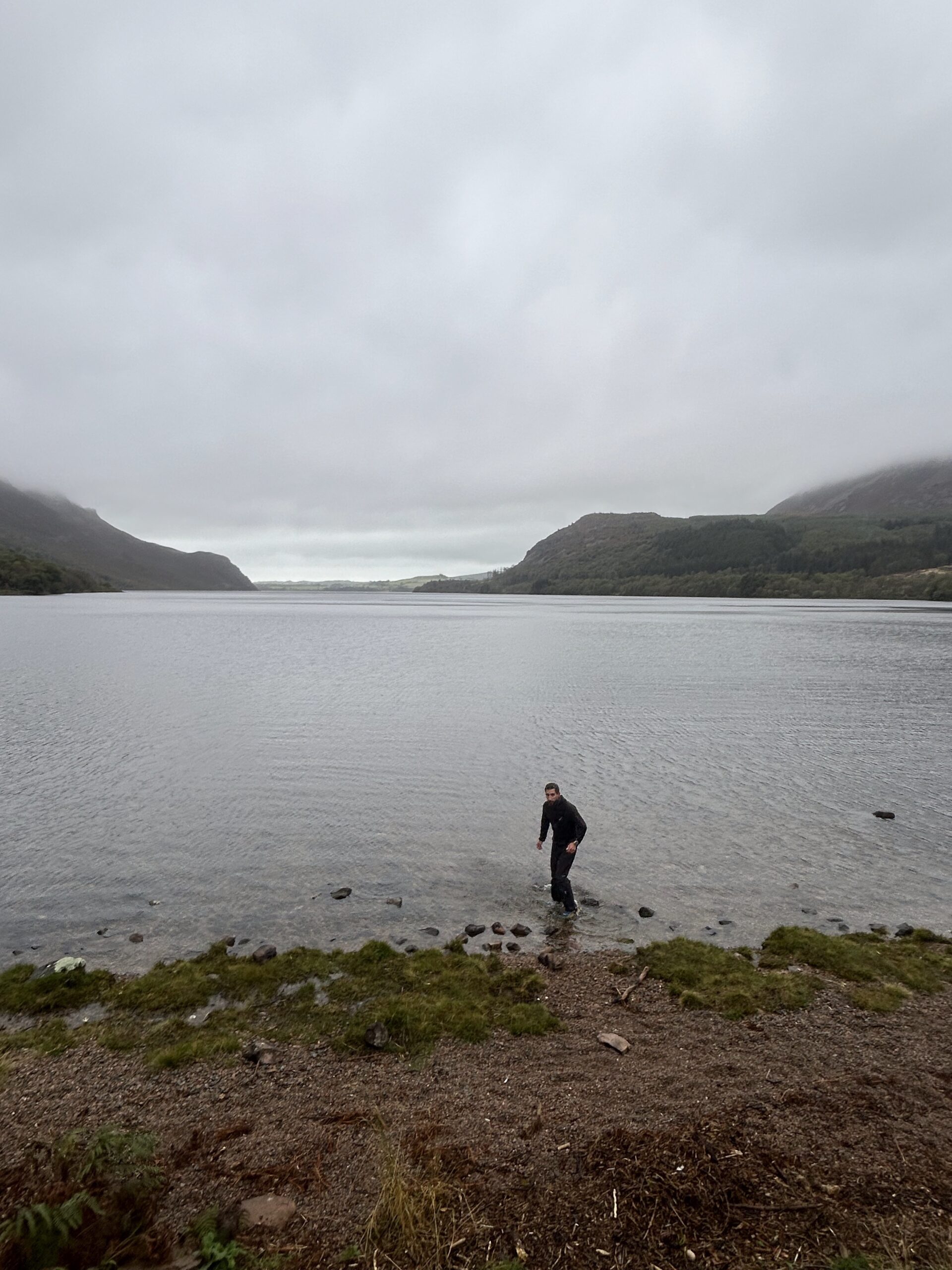
Making sure I touch the Lake !!!
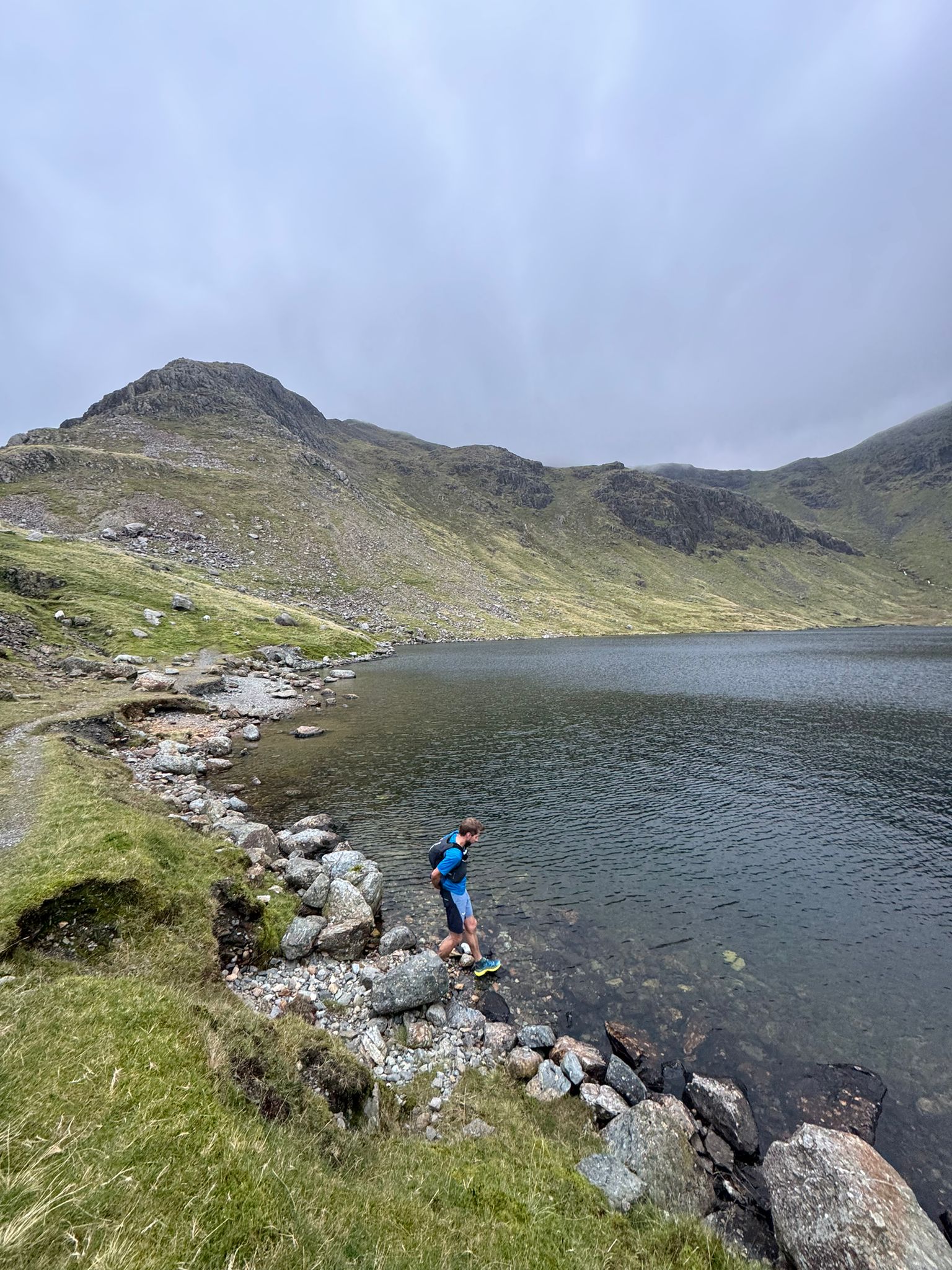
My Fav part of the Lakes, Meres and Waters
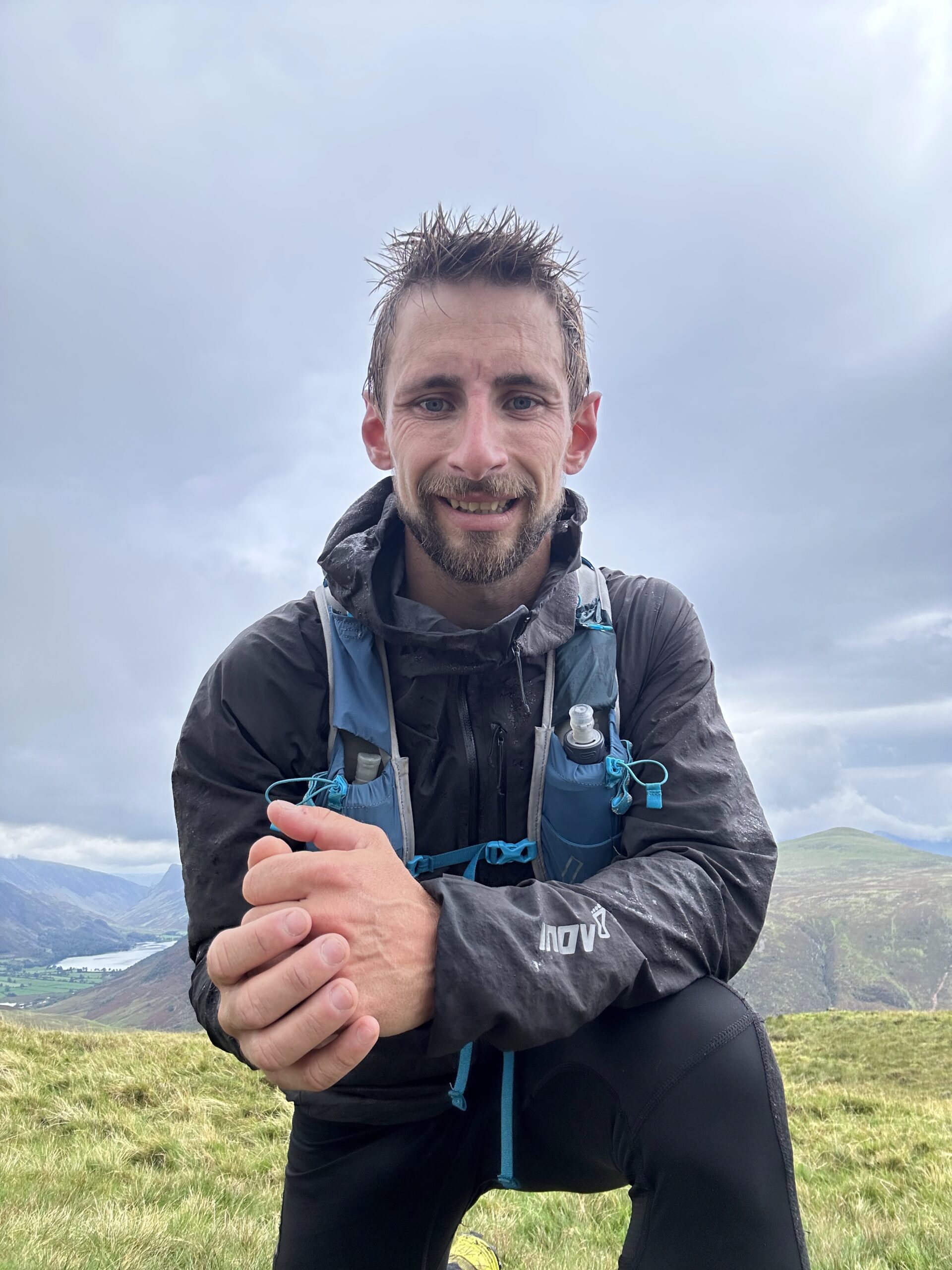
The A Team after a tough night
LEG 4 Monk Coniston to Waterhead, Ambleside
- Distance: 22 km
- Ascent: 790 meters
- Lakes Visited:
- Crew: Steve (at Rydal Water), Dan (until just after Hawkshead)
As we left Monk Coniston on the Lakes meres and waters , the landscape opened up beautifully, and this leg gave us the opportunity to visit some of the quieter, but no less stunning, lakes. The rst stretch took us alongside Esthwaite Water, a peaceful body of water that always feels a bit tucked away from the more bustling parts of the Lake District. It’s one of those hidden gems that, when you run past it, gives you a moment of quiet appreciation for the simpler, calmer side of the Lakes. Running with Dan, we kept up a good pace as we made our way towards Rydal Water. I always love this section; the views are classic Lakeland—rolling hills stone walls, and those iconic tarns and waters. And as planned, my good friend Steve joined me at Rydal Water.
He had a busy season guiding, but he’d made time to come out and support me for a few hours. It was fantastic to see him, and catching up as we ran beside the water was a real highlight. The miles seemed to y by as we talked about his season, future adventures, and, of course, the beauty of the run we were doing. Steve has such a deep knowledge of the fells, and his calm presence always has a way of making you feel more grounded. We were running past places that held so much signicance to us both, and sharing that experience with him made it even more special. As we left Rydal, we passed Grasmere, another iconic spot on the route. Alex and I talked a lot about the Lakes we were passing—it’s impossible not to. Grasmere, in particular, felt serene as the day moved on. With the autumn colors just starting to change, the landscape around the lake was like something out of a painting, which Alex and I both appreciated. The conversation with Alex kept things light and focused.
He shared his own experiences of running the Lakes, Meres, and Waters challenge, and we swapped tips on navigating certain sections. His insights were a real boost, and it was great to chat about the route in more detail. We talked about what it meant to move through these landscapes—how each lake had its own character, and how, no matter how many times you pass them, they never lose their magic. By the time we approached Waterhead at Ambleside, I felt incredibly lucky to have shared this leg with such good company. The lakes we passed, the conversations we had, and the support I received all made this section feel a lot lss of a drag than i was thinking it would do !!!. By the time I reached Ambleside, darkness had fully settled in, and I couldn’t ignore the thought of the long night ahead.
The bad weather looming in the distance, I stayed focused on the task at hand. Waiting for me at Ambleside was Ben, who would be joining me for the next 50 km stretch to Derwent Water. We took a moment to chat about the weather and the conditions we were about to face. It was clear the weather was going to make things interesting, to say the least. We both agreed on one thing: we’d take it as it came, but if at any point either of us felt it wasn’t safe to continue, we’d stop and head home.
I’m not about to let something stupid happen out of arrogance know to well from work and life as rescue team member that things can spiral out of control quick when your in those conditions —it was about making smart decisions at the time in the mountains. I was fully on board with that, and so was Ben. With that plan in place, we geared up and set off into what we later jokingly referred to as “the valley of the shadow of death.” The night ahead was going to be tough, but with a solid plan and good company, we were ready to face whatever came our way.
Ultra Running Coach
LEG 5 Waterhead to Patterdale MRT Base
- Distance: 35.40km
- Ascent: 1828 meters
- Lakes Visited: Windermere, Skeggles Water, Kentmere, Small Water, Haweswater, Blea Water, Hayswater, Brothers Water
- Crew: Ben Mc
Leg 5 started off relatively easy, winding through trails and paths that lead out to Troutbeck before the climb up Garburn Pass. I’d recced a more direct route with James a few times, but the high bracken that day made it more trouble than it was worth, so we stuck to the better ground and just kept moving. Although it was dry when we started, you could feel the weather shifting. And sure enough, as we hit the top of Garburn Pass, the rain came in hard. Quick change into full waterproofs, shared a look and a smile with Ben, and then we descended into Kentmere.
The weather for this part of the Lakes meres and waters wasn’t pretty, but we cracked on. The next stop was Skeggles Water, and the terrain turned into a boggy, wet mess. Those big tufts of grass that trip you up were everywhere, and the headwind-driven rain was all over the place—left, right, upside down, you name it. Ben led the way, nding the best line through the muck, and I have to give him full credit for keeping the pace strong. If you’re thinking of doing this round, I’d denitely recommend recceing this section—Skeggles Water can be tricky! Once we got past Skeggles, the climb out was straightforward, and we rejoined the path in Kentmere Valley. It felt like the next stretch to Kentmere Reservoir went quickly. Ben and I were heads down, fully wrapped in waterproofs, just grinding through the miles. Things got serious as we left Kentmere Reservoir and began the climb to Nan Bield Pass. We took a quick break at the shelter to refuel, and both of us just laughed at the situation.
What were we doing up here in this weather? But this was the point of no return—we agreed to keep pushing on, as it made more sense to head to Patterdale MRT Base than to turn back.The winds were brutal, and even in those two short minutes we stopped, you could feel the cold setting in. The descent past Small Water and onto Haweswater was slow going, with the trail looking more like a waterfall. We took care, especially with the wet rocks underfoot. After tagging Haweswater, the climb to Blea Water gave us a brief respite from the wind, and we even had a few moments of calm. But the climb up to High Street was no joke. It was long, steep, and tough on the legs. I could feel the distance catching up to me. Once we topped out, I knew we needed to keep moving fast—there was no lingering in that exposed weather.
At Brothers Water, I started to feel like the worst of the night was behind us. The next stretch was mostly road, about 8 km of it, which was a welcome break from the mountain terrain. It gave us a chance to warm up and stretch out the legs a bit. When we hit Brothers Water, I asked Ben how much time I’d lost. I’d pushed hard earlier in the day to bank some time, knowing the night could slow us down. To my surprise, Ben said, “Mate, we’re ying. You’ve only lost 40 minutes.” I was expecting him to say I’d lost over an hour, so this was a real morale booster.
We pressed on toward Patterdale on the Lakes meres and waters , where Wayne would be joining us for the next leg. Kirsten would meet me there with some much-needed fresh socks and a change of clothes. Even though I had planned to stop for a bit at Patterdale, I decided to keep moving while the lads sorted the kit. Kirsten had been tracking the weather all night, and we chatted briey on the phone as I passed through Patterdale. I let her know I was doing well and looking forward to seeing her at Derwentwater, which kept me going through the dark hours.fpr
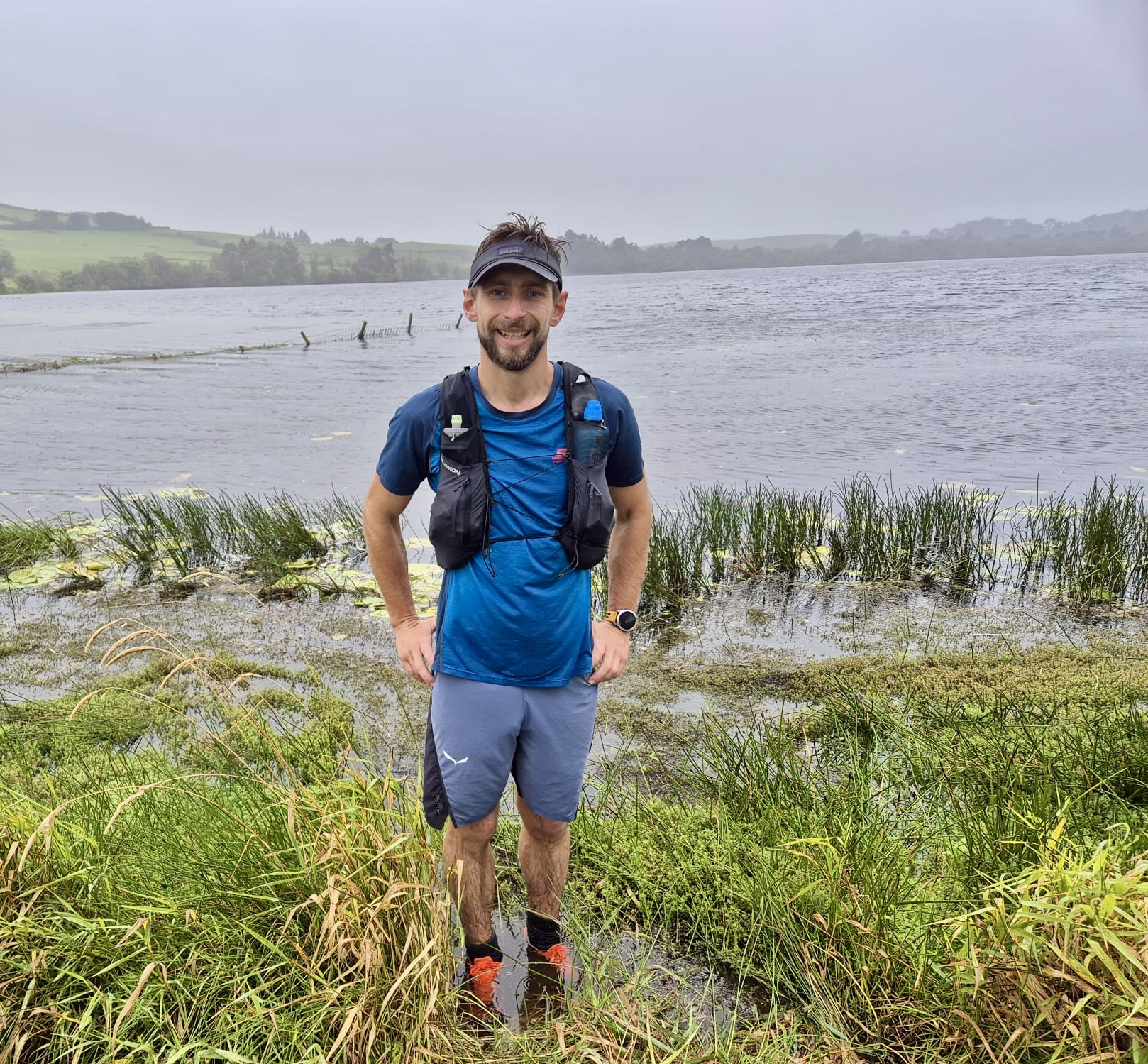
At the end of 25 hours of running
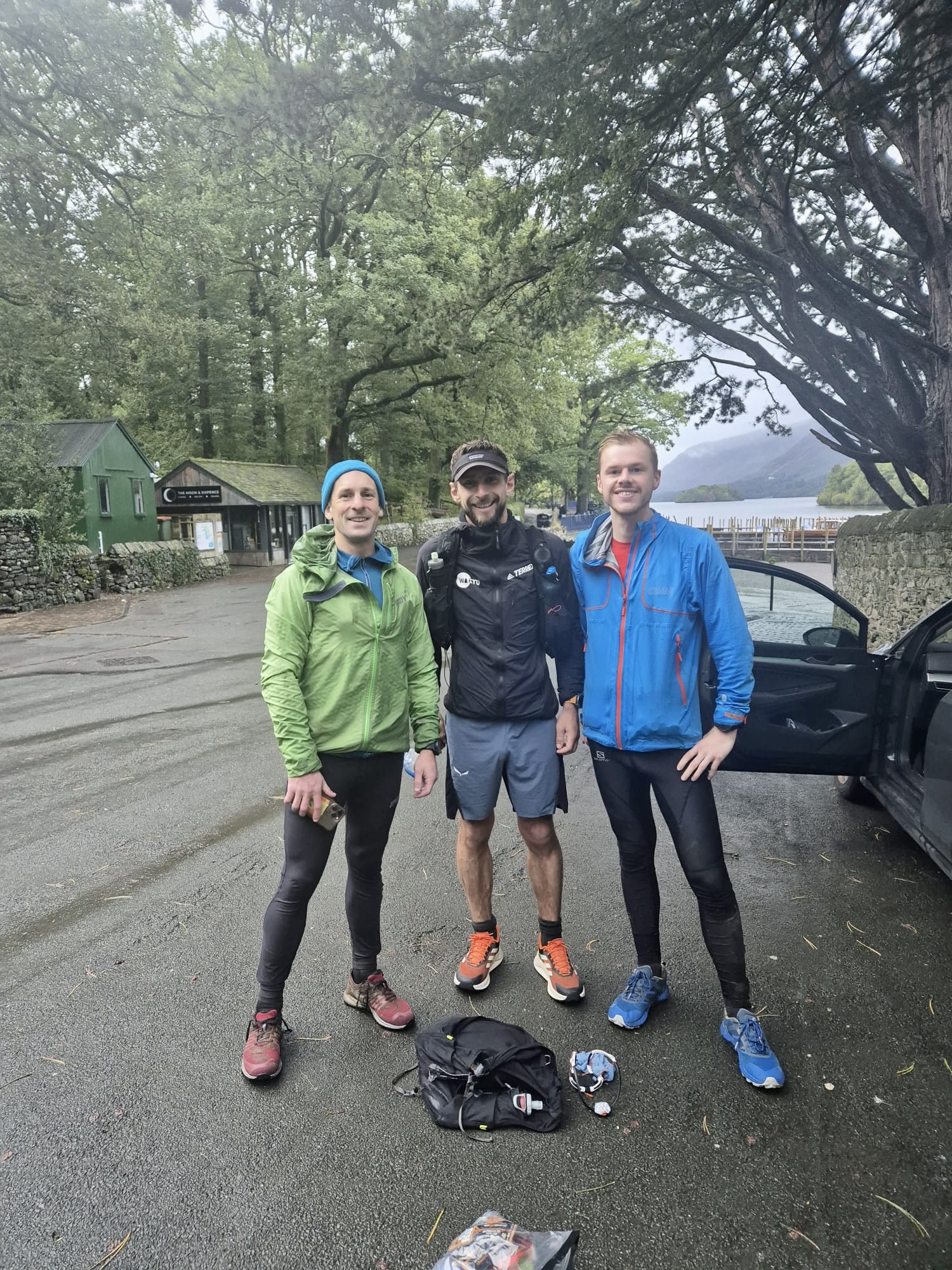
The A team after a long night

Puncak Yamin, Papua
Aliquam lacinia interdum diam quis malesuada. Sed id purus cursus, lobortis magna sed
LEG 6 Patterdale MRT Base to Derwentwater
- Distance: 23.30km
- Ascent: 718 meters
- Lakes Visited: Ullswater, Thirlmere, Derwentwater
- Crew: Ben Mc, Wayne
Almost there—just one last climb up and over Sticks Pass on the Lakes meres and waters Wayne, who’s supported me on plenty of rounds including Winter Bob Graham and Winter Steve Parrx, was waiting at Patterdale MRT since 2 a.m. He’s an incredible runner, and as soon as we set off, he took charge. It was a relief to let him lead, giving both me and Ben a bit of a mental break.
The climb up Sticks is really runnable, and we joked about trying to get a segment on it. Not sure how close we got, but it gave us something to laugh about. When we reached the top, we were greeted by James Gibson and Bryan Wakely, who were doing safety for another event. I’d just been joking to Wayne and Ben about how mad someone would be to camp in this weather, so seeing the lads there cheering us on was a funny surprise. It was great to chat with them for a few minutes, and I felt reassured knowing I had made it this far. From Sticks Pass, we descended into Thirlmere, saying goodbye to the fells and trails for the last time. From here, it was all road to the nish—about 25 miles of it. We opened up the pace a bit, clocking an average of 9 km/h, boosted by a caffeine gel.
Lake District Personal Training
LEG 7 Derwentwater to Finish
Kirsten was waiting for me at Derwentwater with fresh supplies, road shoes, and dry clothes. She had everything under control, and it was such a relief to see her for a few minutes.
She even had the logistics sorted for getting the lads back to Patterdale, which I had totally overlooked. It’s hard to describe how happy I was to see daylight. We’d made it through the night, and somehow I’d managed to claw back time. Just 18 km of road running left, and it would be done.
But I have to say, I totally underestimated this leg. I’m glad I didn’t recce it, because if I had, I think knowing what was ahead would have been soul-destroying. The run to Bassenthwaite seemed to drag. By this point, my legs still felt decent, but my feet were sore, and the usual aches of a 100-mile run were starting to show.
But Sarah Perry, who was with me on this leg, kept the mood light. Sarah’s an amazing runner, and she brought the energy and laughs. Every downhill felt like torture on my quads, but Sarah found my exaggerated pain pretty funny! The last stretch up to Overwater seemed never-ending. I’ll never forget those nal 5 km—it felt like forever. But with 2 km left, Kirsten’s car suddenly pulled up beside us. She hopped out, threw on her running gear, and joined me for the nal part. Running to the nish with her was the best possible way to end the round.
Overwater came up fast after that! Touching the water and stopping my watch at 25 hours and 13 minutes, I was a full hour ahead of schedule. It was an incredible feeling.
The Lakes meres and waters
103 Miles, 7700 meters of climbing, 25 hours 13 minutes
This challenge is one of the hardest rounds I’ve done. It demands a well-rounded skill set—strong on roads, fast on trails, and comfortable with technical mountain terrain. I’m always humbled by the fell running community in the Lake District and the amazing people who come out to support. It’s an incredible thing, and I feel lucky to be part of it.
See my Strava and GPx : HERE
Special thanks goes to: Kat Downie | Ben Mc | Alex Stainforth | Wayne Crosdell | Steve Hopwood | Dan | Sarah and Kirsten